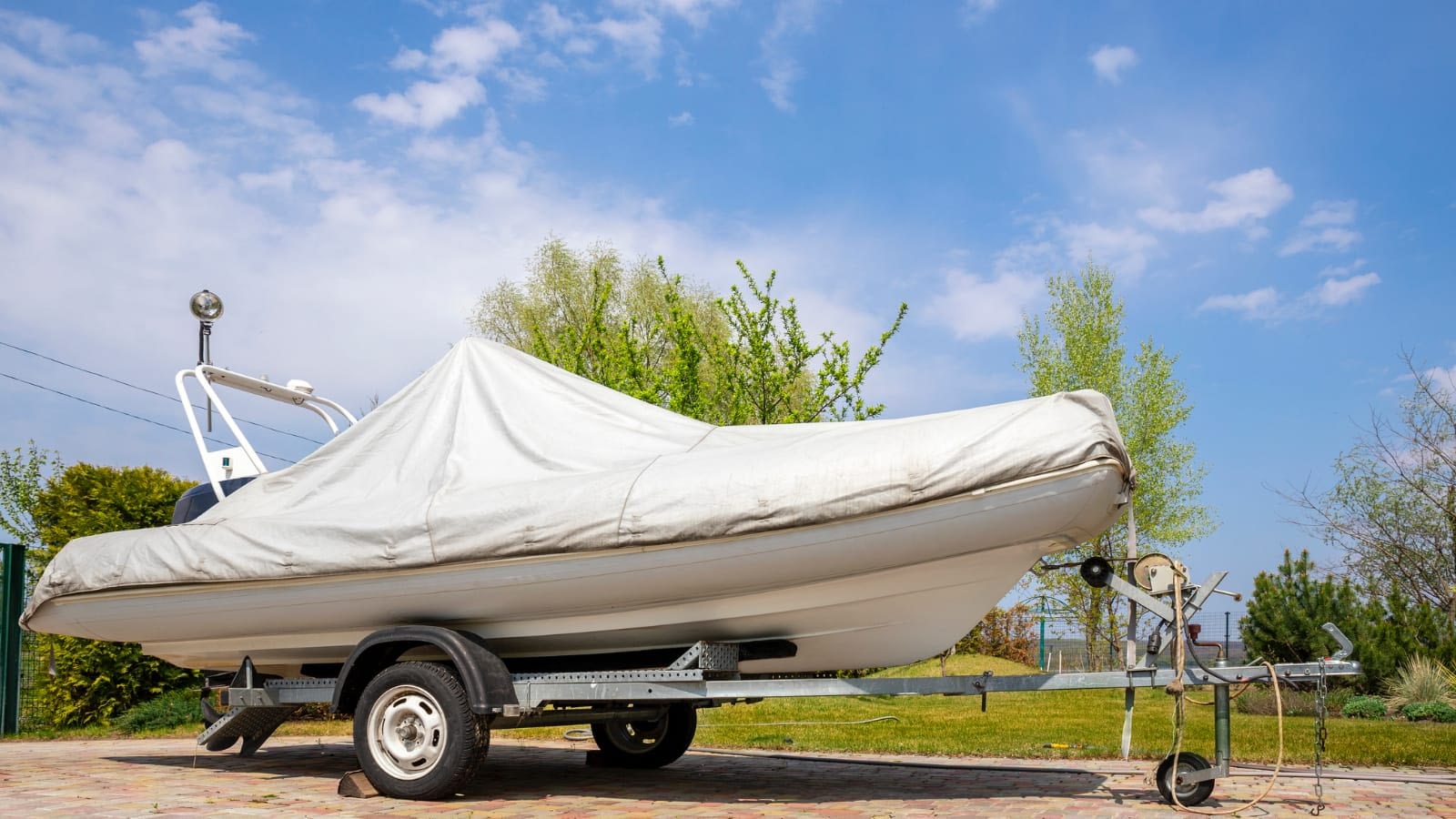
If your boat is kept in a cold winter weather area without heated storage, you will want to winterize before the first freeze sets in. You can pay someone else to winterize it for you, or save money by doing it yourself in a few simple steps.
Steps for Winterizing an Inboard/Outboard Drive Boat
Gather Your Tools and Supplies
A factory service manual could be an invaluable reference to help you locate all the drain ports and cooling units on your boat. You will also need tools and materials, including:
- Oil suction pump
- Lube injection pump
- Drain plug gaskets
- Screwdrivers
- Socket wrenches
- Combination wrenches
- RV antifreeze
- Fogging oil
- Oil filter
- Motor oil
- Bucket
Clean the Carburetor and Change the Engine Oil
First, change the oil and filter. Remove the dipstick and insert the suction hose in the dipstick tube to take out the old oil. Then replace the filter and add fresh oil.
Next, fill the gas tank with non-oxygenated fuel, add a fuel stabilizer, and run your boat to a landing. While the boat is still in the water, take the spark arrestor out of the carburetor and fog the engine. Take the boat out of the water on a trailer to perform the remaining steps.
Drain Off the Coolant
Tip the trailer and place a bucket under the hull drain. Use an open or box-end wrench to remove the hull plug. Get in the boat and start removing drain plugs or hoses near the top of the engine. Make sure to remove plugs or hoses from the oil cooler, block drain plugs, power steering cooler, and exhaust manifolds. Instead of screwing the drains open, you can remove the entire valve, for better drainage and to prevent the wings from breaking off.
When the boat is finished draining, reinstall all the plugs and hoses, except for the block drain plugs. Remove the hose attached to the thermostat housing, or the thermostat itself, and pour in RV antifreeze until it comes out of the block drains. Once it stops draining antifreeze, re-insert the hull and block drain plugs.
Lubricate Lower Unit
Take the bottom drain plug out of the lower unit, allow it to drain for a few minutes, and remove the upper vent plug. When all the old lube has drained out, use a screw-in pump nozzle to refill it with fresh high-performance lube. Put new gaskets in the vent and drain holes and reinstall plugs.
Charge the Battery
As a final step, remove the terminals and fully charge the battery. You can leave the charged battery in the boat or bring it inside and attach it to a maintainer. Now that winterizing is done, you can cover your boat until spring.
Get the Right Insurance Coverage
Boat insurance can help protect you against damage to your boat, new boat replacement, and liability for personal injury, property damage, or fuel spills. Our agent can help you find the right boat insurance policy to protect your investment.
Filed Under: Personal Insurance | Tagged With: Boat Insurance
